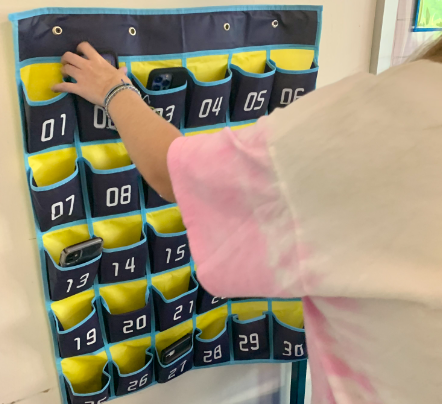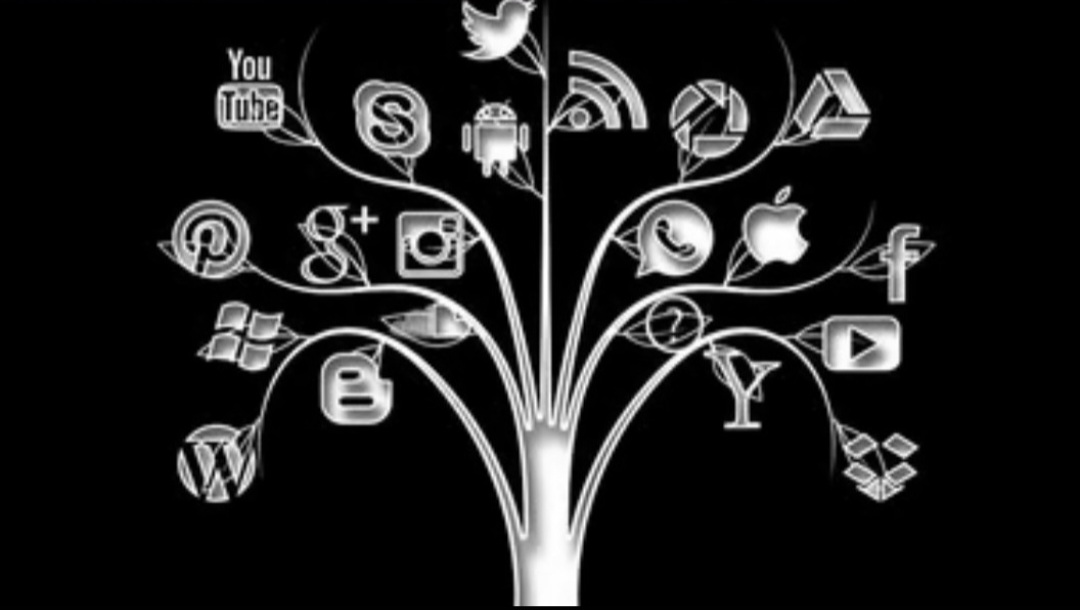There’s an elephant in the room, and schools are doing everything but finding an effective solution.
The issue of cell phone addiction has been prominent since March 2020: the COVID-19 lockdown. “ Because school-aged children had to take online classes from home during the pandemic, there was a significant increase in their use of mobile phones [4, 5], which led to the rise in mobile phone addiction [6–8]”(ncbi.nlm.nih.gov).
This addiction among teenagers is not compatible with the traditional high school system. Teachers are frustrated, seeing students spend more of their time scrolling through TikTok or playing Papa’s Freezeria than paying attention to their lectures.
This exasperation has caused many schools to eliminate phone usage altogether. “More than three-quarters of schools, 76.9 percent, prohibited non-academic use of cell phones or smartphones during school hours during the 2019-20 school year, according to the most recent data from the National Center for Education Statistics, up from 70.3 percent in 2017-18”(edweek.org). Students are required to put phones in holders, bins, and even locked bags.
This may solve the issue in the classroom, but does it truly aid students?
In a survey conducted among Eastern students, 100% stated that banning cell phones in the classroom is not effective. Many brought up the lack of engagement in the curriculum. Senior Hannah Escritor stated that “if I am able to not pay attention to a class and use my phone quietly and respectfully while still excelling in that course, the fact that the coursework is below my skill level, and therefore doesn’t require my attention, is not my fault”. All students have different educational needs, and, if some can work well while multitasking, why hinder their success?
High school is meant to prepare students for college and career success—both institutions where a phone will be on their person. Senior Gavin Garcia underlined the importance of facing cell phone addiction while in high school, stating that, “High school is the place where cell phone addiction will start impacting their academic performance to the point of potential failure, so they cannot realistically continue their current phone usage without serious consequences for their future. This would hopefully open their eyes to the fact that they will need to make a change to avoid failure”.
He further elaborated, “If there’s a serious threat of failure and not graduating presented to phone-addicted teenagers, it will motivate those that wish to succeed towards establishing a better balance with their phone”. Even those who are unmotivated will be “woken up” eventually when their graduation and future employment are put on hold due to their addiction to the screen.
Gavin Garcia’s full response can be read here.
Many also believe that it is unfair to punish the masses for the actions of a few students. Senior Kaylyn Joesten questioned the policy, stating that “It’s not fair to punish all students simply because some students choose to abuse privileges. If I use my phone responsibly, to text parents about important things, remind messages for school clubs, etc and only during independent working time, then why should I suffer from my school’s inability to properly discipline rebellious students?”
There is also the concern of school emergencies. According to the National Center for School Statistics, “From 2000 to 2021, there were 276 casualties (108 killed and 168 wounded) in active shooter incidents at elementary and secondary schools and 157 casualties (75 killed and 82 wounded) in active shooter incidents at postsecondary institutions”. There is never a day when students are guaranteed safety in their school, and many feel more comfortable having the ability to text a parent or guardian in the case of an emergency.
“I think it’s a major safety hazard. In today’s world, we sadly never know what the day will bring, and as a student, that terrifies me. Having my phone is a sense of security, allowing me to be able to get in touch with my parents if needed”, expressed junior Rylee Pearlman.
This is not to say that the concerns of teachers are invalid. Cell phones are incredibly addictive, and lessons about the Bill Of Rights and trigonometry pale in comparison to the ever-interesting screen.
In a poll conducted with Eastern teachers, 90.9% of those surveyed agreed with the idea of cell phone holders being implemented throughout the school. Eastern’s foreign language department was the first to implement the “phone cubbies” in 2021, and many teachers have since adopted the policy and brought it into their classrooms.
History teacher Mr. Colton described the efficiency of the idea in his classroom. “I can just look at my system and see who’s here, who’s got the phone. And then I don’t have to worry about it and they don’t have to worry about it”, he explained. He further elaborated, “I think students probably were skeptical about it at first and resistant to it, but now it’s just a matter of course. And the more teachers that do it, the easier it’ll be for everyone. When people come into the school and they know the expectations, they have to put it away in every class”.
The phone holders create a system where all students are under the same rules, eliminating the embarrassment that comes from being singled out for their phone usage in class. “I am taking steps to cut back on cell phone use in my own life such as limiting social media use, and I feel students here would benefit from doing the same”, stated new history teacher Mr. Davis. “It is because I have experienced firsthand how cell phones can hinder education from the perspective of a student that I support cell phone holders in the classroom.”
Cell phone holders may be a short-term solution to the issue of cell phone addiction in the classroom, but they are ineffective in the long term. When teenagers are deprived of cell phone usage throughout the school day, they feel further inclined to use their phones once they return home; from the moment they enter the door to the minute they fall asleep. “Adolescents who reported “inadequate” sleep had shorter sleep duration, greater frequency of technology use before bedtime, feeling unrefreshed on waking, and greater daytime sleepiness than those reporting “adequate” sleep”(pediatricnursing.org). This excessive nightly screen time and lack of sleep combine into a lack of attentiveness in the classroom—the exact outcome schools aim to avoid.
Eliminating phone usage in the classroom altogether is abortive. While getting rid of the issue of digital distraction, it paves the way for students to invent new ways to divert their attention. It also creates a divide between teacher and student, with the latter feeling a lack of respect. “By taking away all phones at a period of life where cellphone usage habits are already formed, it is too little too late. It will create a need for so much more administrative oversight, punitive action, surveillance, conflicts, and further loss of faith and goodwill between the staff and student body that outweighs its potential benefits”, voiced Garcia.
Cell phone addiction, however, is not unsolvable. Schools can focus on those who are suffering from cellular addiction, and work with them to achieve a better balance, and therefore better performance in the classroom. Teachers can adjust their lessons to be more interactive and enjoyable for students. Further incentives and disciplinary measures can be implemented, encouraging students to limit their cell phone usage.
With some adjustments, schools can create a better educational environment for both students and staff who struggle with the issue of screen addiction. The “elephant in the room” has many attainable solutions, but only if schools are amenable to them.








